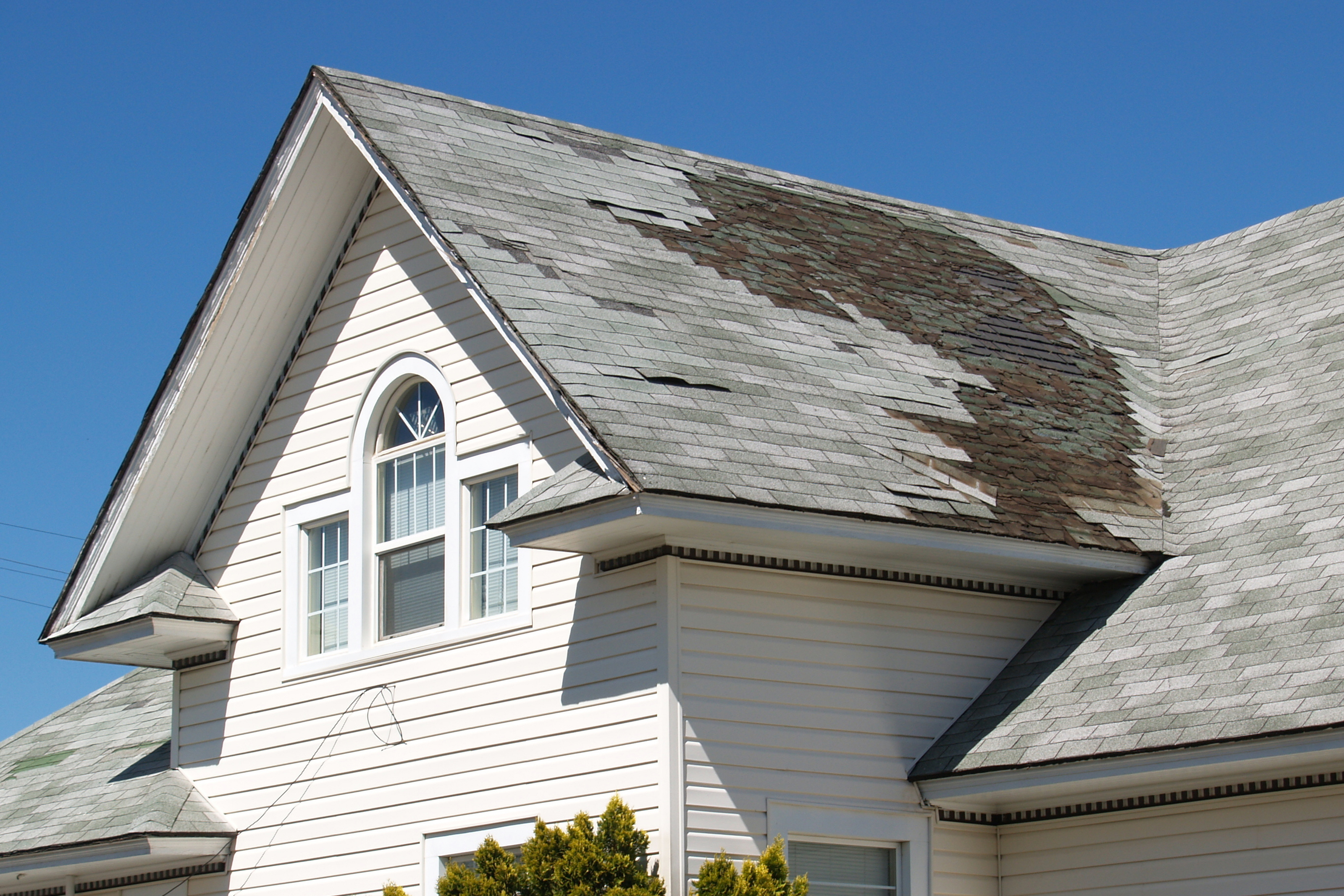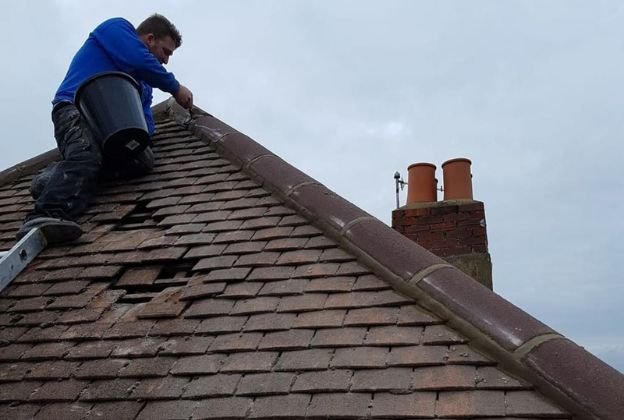Discovering the Various Kinds Of Roofing Systems: Which One Is Ideal for Your Home?
When taking into consideration the myriad kinds of roof coverings offered, it is important to assess just how each option straightens with your home's one-of-a-kind demands, consisting of environment problems, visual preferences, and architectural functionality. From the timeless gable roofing that efficiently networks rainwater to the modern-day level roof covering offering metropolitan versatility, each style presents distinctive benefits and difficulties.
Gable Roofing Systems
Gable roofs, identified by their triangular form and sloping sides, are a preferred selection among homeowners looking for both visual allure and capability. This roofing style properly allows for reliable water overflow, reducing the threat of water pooling and succeeding damages. Furthermore, the steep inclines develop enough attic area, which can be made use of for storage or also converted right into living locations.
One of the key advantages of gable roofings is their capability to withstand rough climate condition. The design helps in lessening wind resistance, making them especially suitable for locations susceptible to tornados. Additionally, saddleback roofs can be created making use of a selection of products, including roof shingles, ceramic tiles, and metal, giving house owners with adaptability in style and budget.
From a building viewpoint, gable roof coverings can boost the aesthetic allure of a home, supplying a traditional and timeless appearance. Generally, gable roofings stay a preferred alternative due to their balance of usefulness and style, appealing to a broad range of property owners.
Flat Roofs
While frequently ignored for even more traditional roof covering styles, flat roofs provide unique advantages that accommodate details building demands and modern-day style choices. These roofs are identified by their very little pitch, permitting effective use of space, especially in metropolitan settings where taking full advantage of square video is necessary.
One substantial advantage of level roofings is their convenience. They can be utilized as extra home, such as rooftop yards, patio areas, or solar panel installments, enhancing the performance of a home. In addition, flat roofing systems are generally less complicated and much safer to navigate during maintenance, facilitating fixings and assessments without the obstacles presented by high slopes.
Level roofs can likewise be a lot more cost-efficient in terms of products and installment. With an easier design, they commonly require fewer resources, equating right into lower labor prices. However, it's vital to consider drain and waterproofing, as flat roofing systems can be prone to merging water if not properly created.

Hip Roofs
Hip roof coverings stick out for their stylish layout and structural integrity, making them a prominent choice among home owners. Defined by inclines on all 4 sides, hip roof coverings supply a healthy aesthetic that matches numerous architectural designs - roof repair oahu. The symmetrical nature of these roofs helps to distribute weight equally, enhancing stability and durability
Among the crucial advantages of hip roofings is their capability to withstand severe climate problems. The sloped surfaces help with effective water drain and snow drainage, minimizing the threat of leaks and architectural damages. Additionally, the design minimizes wind resistance, making hip roofings less at risk to wind uplift contrasted to various other roofing kinds.


Lost Roofs
Dropped roofing systems, in contrast to the complexity of hip roofings, offer a streamlined and minimal design that interest modern-day aesthetic appeals. Identified by a single sloping surface, shed roofs are commonly used in contemporary architecture, garden sheds, and other functional frameworks. This simpleness not only enhances aesthetic charm but likewise enables effective water drainage, making them appropriate for various environments.
One of the primary advantages of shed roofing systems is their cost-effectiveness. With fewer products needed and a straightforward installment procedure, home owners can save both money and time. The style also allows the consolidation of huge home windows or skylights, promoting all-natural light and developing large interiors.
Nonetheless, it is vital to consider the possible downsides, consisting of minimal insulation choices and the requirement for careful layout to avoid extreme heat accumulation. In addition, dropped roofings may not blend seamlessly with traditional architecture, which could be a problem for some homeowners.
Ultimately, shed roof coverings offer a practical and elegant roof option for those seeking modernity and performance. When selecting a roofing type, evaluating individual aesthetic preferences and practical requirements will lead house owners to the best selection for their one-of-a-kind have a peek here requirements.
Mansard Roof Coverings
Mansard roofings, identified by their distinct four-sided style, are a characteristic of French design that combines sophistication with performance. This architectural style features 2 slopes on each side, with the lower incline being steeper than the upper one. The distinct configuration permits extra space in the top levels, making it an optimal selection for property owners looking for to maximize useful area without expanding the building's footprint.
One of the considerable advantages of a mansard roof covering is its flexibility. It can be adapted to different architectural styles, from typical to modern-day, boosting the visual appeal of any kind of home. In addition, the enough space created under the roof covering can easily fit dormer windows, which enable for natural light and air flow, more improving the comfort of the living area.
However, possible property owners ought to think about the upkeep needs related to mansard roofing systems. The steep slopes can lead to increased wear from weather direct exposure, demanding normal evaluations and repair work. Additionally, installment costs might be greater contrasted to simpler roofing More Bonuses layouts as a result of the intricacy of construction. Ultimately, a mansard roof covering can be an exceptional option for those focusing on design and area.
Final Thought
To conclude, the choice of an ideal roofing type hinges on specific requirements, environment considerations, and visual preferences. Each roofing style offers unique advantages, such as the performance of saddleback roofs, the modern-day allure of shed roofs, and the stability of hip roof coverings. Moreover, level roofing systems supply practicality for city atmospheres, while mansard roofs supply extra home despite higher installation prices. Eventually, a thorough assessment of these aspects will guide house owners in making an educated decision.
From the traditional gable roofing that successfully networks rainwater to the contemporary level roofing system offering urban versatility, each style provides distinctive benefits and challenges (roof repair oahu). In addition, the design lessens wind resistance, making hip roofs much less vulnerable to wind uplift compared to other roofing system types
Dropped roofing systems, in comparison to the intricacy of hip roofs, supply a minimalist and structured style that appeals to contemporary aesthetic appeals. Each roofing style offers distinct benefits, such as the effectiveness of gable roofing systems, the contemporary appeal of shed roofing systems, and the security of hip roofing systems. Level roofs offer usefulness for metropolitan environments, while mansard official site roofing systems supply extra living area despite greater installation prices.